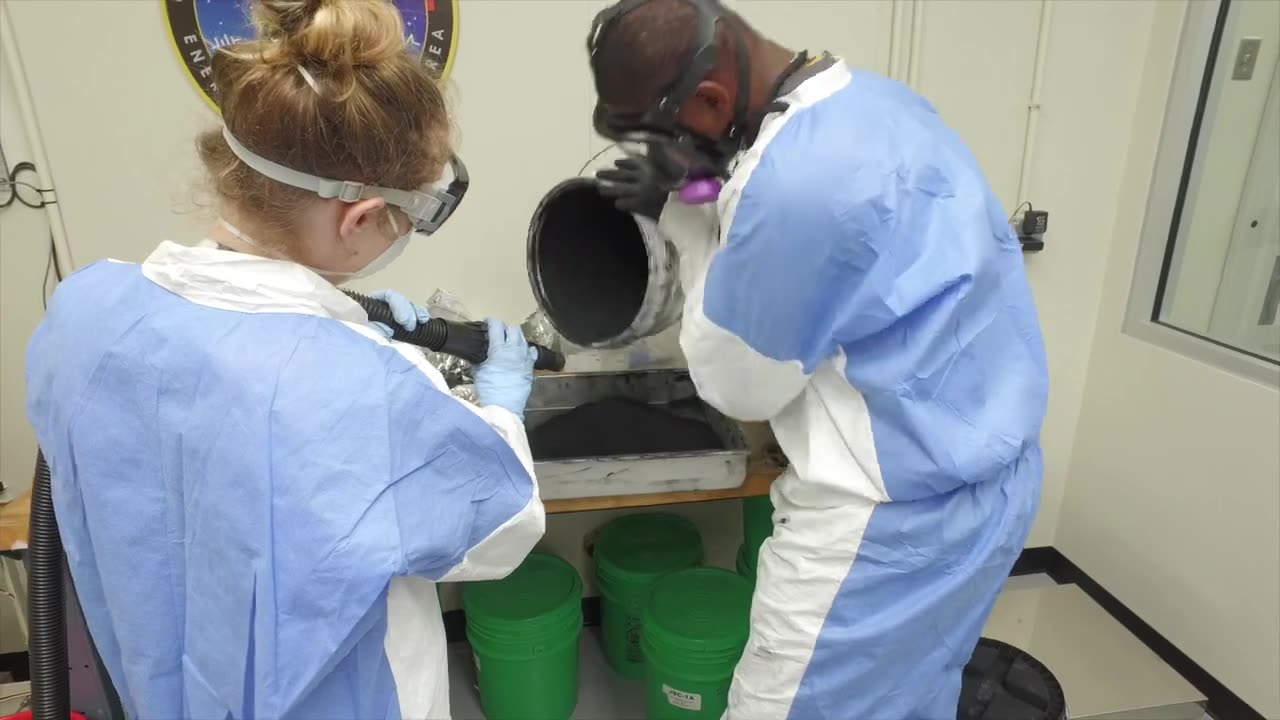Premium Only Content

NASA Achieves Successful Extraction of Oxygen from Simulated Lunar Soil
During a recent test, scientists at NASA’s Johnson Space Center in Houston successfully extracted oxygen from simulated lunar soil. Lunar soil refers to the fine-grained material covering the Moon’s surface. This was the first time that this extraction has been done in a vacuum environment, paving the way for astronauts to one day extract and use resources in a lunar environment, called in-situ resource utilization.
NASA’s Carbothermal Reduction Demonstration (CaRD) team conducted the test in conditions similar to those found on the Moon by using a special spherical chamber with a 15-foot diameter called the Dirty Thermal Vacuum Chamber. The chamber is considered “dirty” because unclean samples can be tested inside.
The team used a high-powered laser to simulate heat from a solar energy concentrator and melted the lunar soil simulant within a carbothermal reactor developed for NASA by Sierra Space Corp., of Broomfield, Colorado. A carbothermal reactor is where the process of heating and extracting the oxygen takes place. Carbothermal reduction has been used for decades
NASA's Johnson Space Center successfully extracted oxygen from simulated lunar soil in a vacuum environment, a crucial step for future in-situ resource utilization on the Moon. Using their Carbothermal Reduction Demonstration (CaRD) setup, scientists utilized a high-powered laser within the Dirty Thermal Vacuum Chamber to melt lunar soil simulant in a carbothermal reactor developed by Sierra Space Corp. The process mimics carbothermal reduction, a technique used on Earth for various applications. After heating, the team detected carbon monoxide using the Mass Spectrometer Observing Lunar Operations (MSolo). Similar devices will be used in upcoming lunar exploration missions, including the Polar Resources Ice Mining Experiment and NASA's Volatiles Investigating Polar Exploration Rover (VIPER).
-
 1:03:45
1:03:45
Donald Trump Jr.
1 day agoHappy Festivus: Airing Our Grievances and Stopping The Swamp w/Sean Davis | TRIGGERED Ep.201
380K480 -
 1:30:30
1:30:30
Game On!
14 hours ago $5.48 earnedTop 5 things you need to know for Sports Christmas!
31K3 -
 1:58:10
1:58:10
Robert Gouveia
23 hours agoMatt Gaetz REJECTS Report, Sues Committee; Luigi Fan Club Arrives; Biden Commutes; Festivus Waste
261K202 -
 1:31:40
1:31:40
Adam Does Movies
23 hours ago $14.13 earnedThe Best & Worst Christmas Movies! - LIVE!
92.6K8 -
 58:10
58:10
Kimberly Guilfoyle
1 day agoAmerica is Back & The Future is Bright: A Year in Review | Ep. 183
183K70 -
 3:03:27
3:03:27
vivafrei
1 day agoEp. 242: Barnes is BACK AGAIN! Trump, Fani, J6, RFK, Chip Roy, USS Liberty AND MORE! Viva & Barnes
256K247 -
 2:05:48
2:05:48
2 MIKES LIVE
6 hours agoTHE MIKE SCHWARTZ SHOW with DR. MICHAEL J SCHWARTZ 12-24-2024
32.1K3 -
 1:14:17
1:14:17
MTNTOUGH Fitness Lab
1 day agoNavy SEAL Dom Raso: The Cold, Hard Truth About Modern Brotherhood | MTNPOD #96
25.5K4 -
 43:42
43:42
Dad Dojo Podcast
22 hours ago $0.69 earnedEP14: Every Girl Dad's Biggest Fear and How To Prevent It
17.7K -
 55:06
55:06
Bek Lover Podcast
15 hours agoWill Trump Pull Off A Miracle? Other Strange News Podcast...
15.1K17